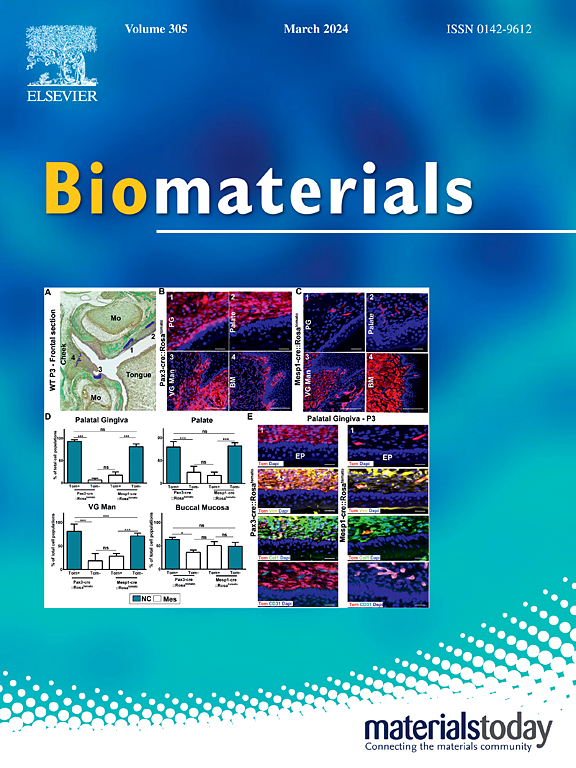Nanozyme-functionalized microalgal biohybrid microrobots in inflammatory bowel disease treatment
IF 12.8
1区 医学
Q1 ENGINEERING, BIOMEDICAL
引用次数: 0
Abstract
Oral drugs are the most direct and effective strategy for the treatment of gastrointestinal diseases. However, the harsh environment of gastric juice, lack of targeted lesion sites, and rapid metabolism present difficulties in the development of oral drugs. This research introduces a nanozyme-functionalized microalgal biohybrid microrobot (Hp@CS-PNAs@PAA) with a novel mechanism for treating inflammatory bowel disease (IBD) by leveraging the therapeutic advantages of microalgae and nanozymes. The microrobot uniquely combines the natural antioxidant capacity of Hematococcus pluvialis (Hp) microalgae and the catalytically active enzyme-mimicking properties of platinum-based nanoparticle assemblies (PNAs), enabling enhanced scavenging of reactive oxygen species (ROS) and targeted anti-inflammatory effects. Through its layered design, the Hp@CS-PNAs@PAA microrobot can navigate the gastrointestinal tract, resist degradation, and target inflamed colon tissues via electrostatic interactions, achieving extended retention and prolonged therapeutic action at inflammation sites. This study demonstrated that the synergistic anti-inflammatory effects of the microrobot derive from its ability to reduce ROS, inhibit proinflammatory cytokines, and promote the expression of tight junction proteins critical for preserving the integrity of the intestinal barrier. Both in vitro and in vivo tests in a DSS-induced colitis mouse model revealed that this system effectively restores damaged tissues by reducing oxidative stress and inflammation, indicating significant potential for clinical application in the management of colitis and similar inflammatory diseases.
求助全文
约1分钟内获得全文
求助全文
来源期刊

Biomaterials
工程技术-材料科学:生物材料
CiteScore
26.00
自引率
2.90%
发文量
565
审稿时长
46 days
期刊介绍:
Biomaterials is an international journal covering the science and clinical application of biomaterials. A biomaterial is now defined as a substance that has been engineered to take a form which, alone or as part of a complex system, is used to direct, by control of interactions with components of living systems, the course of any therapeutic or diagnostic procedure. It is the aim of the journal to provide a peer-reviewed forum for the publication of original papers and authoritative review and opinion papers dealing with the most important issues facing the use of biomaterials in clinical practice. The scope of the journal covers the wide range of physical, biological and chemical sciences that underpin the design of biomaterials and the clinical disciplines in which they are used. These sciences include polymer synthesis and characterization, drug and gene vector design, the biology of the host response, immunology and toxicology and self assembly at the nanoscale. Clinical applications include the therapies of medical technology and regenerative medicine in all clinical disciplines, and diagnostic systems that reply on innovative contrast and sensing agents. The journal is relevant to areas such as cancer diagnosis and therapy, implantable devices, drug delivery systems, gene vectors, bionanotechnology and tissue engineering.
 求助内容:
求助内容: 应助结果提醒方式:
应助结果提醒方式:


